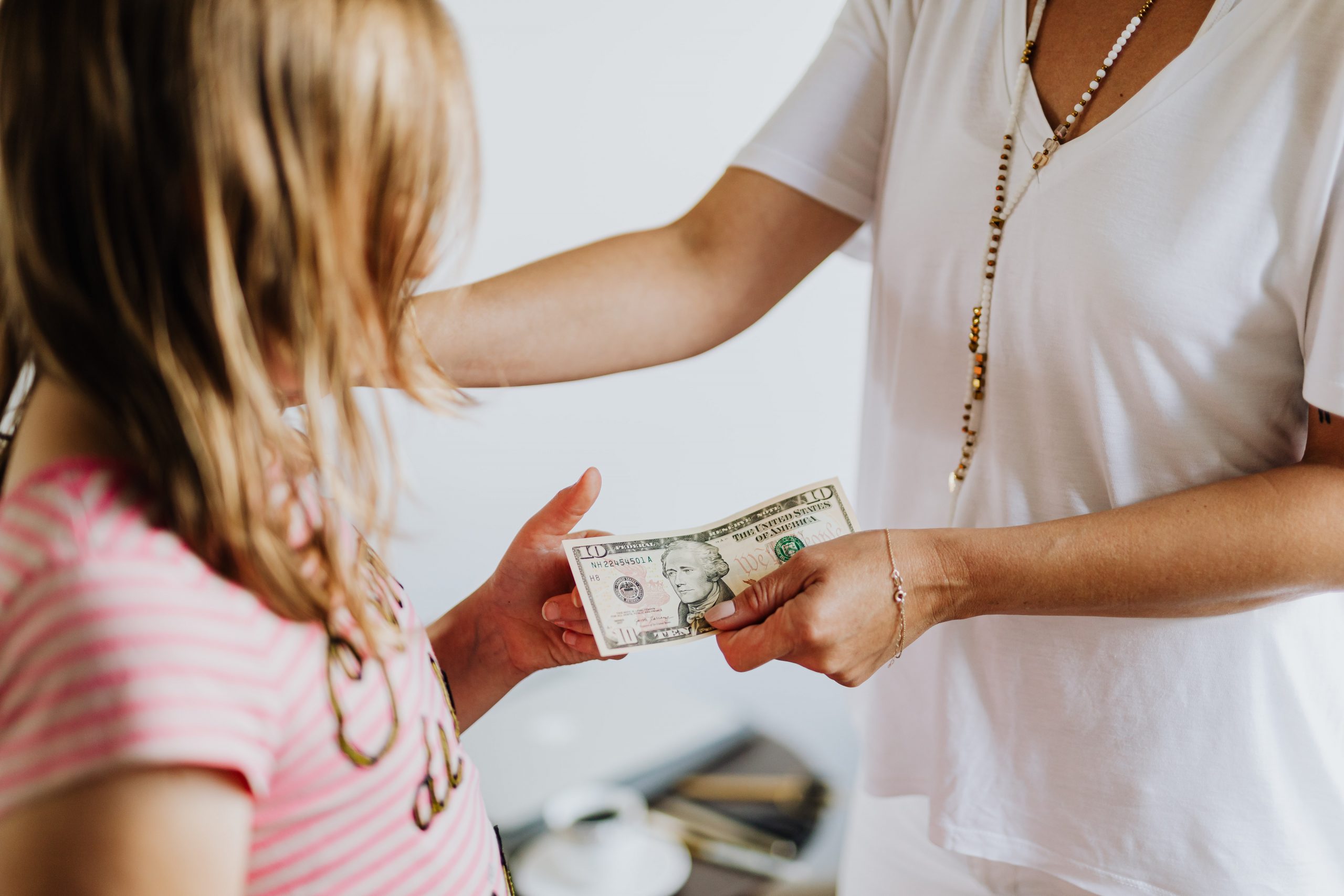Money management is a skill, a vital one. But too often we delay giving even a basic understanding of money to kids. For some parents, it’s just not something they ever think about, while for others it’s a conscious choice. They want their kids focused on school or to avoid the stress that so often comes with finances as long as they can. That’s all admirable but in my opinion, it is a missed opportunity on multiple levels.
For one, money is a lot less stressful when you understand how it works. Once you realize it’s a tool, not a magical commodity, you have a modicum of control. Two, numerous studies published in outlets like CNBC and Forbes demonstrate a positive correlation between children who receive financial education and lower debt rates, higher savings, and overall, more financially secure adulthoods. Three, financial literacy is a life skill. Just like cooking, doing laundry, or time management, eventually, you need to learn them. So why not start early? Below is my simple plan for instituting finance 101 into your home. This is appropriate for kids as young as 5 and can be adjusted as they get older.
Money management can be divided into two basic buckets: making it and spending it.
 Making it: Remember how we said money is not a magical toy brought by Santa Claus? Teaching that lesson starts by letting kids earn it, just like adults do. Growing up my allowance was directly tied to my chores. Each chore had a value and doing them earned me that amount at the end of the week. If I didn’t get my chores done on time my allowance would reflect that. That is ideal for younger kids. Older kids can and should contribute to the household, they consume resources and should thus do chores. In my family, allowance stopped at age 12 because my parents called completing those tasks rent – another good lesson because I began to equate my chores with money. Instead, we were taught the art of the side gig. School and chores came first. But babysitting, mowing lawns, shoveling snow and walking dogs were all appropriate ways to make a little extra. When I turned 16 and wanted to drive, my parents insisted I pay for the insurance, so they let me get a “real job” – one where taxes were taken out and someone who didn’t love me and, frankly, didn’t care if I was having a good day or not was managing and monitoring my work.
Making it: Remember how we said money is not a magical toy brought by Santa Claus? Teaching that lesson starts by letting kids earn it, just like adults do. Growing up my allowance was directly tied to my chores. Each chore had a value and doing them earned me that amount at the end of the week. If I didn’t get my chores done on time my allowance would reflect that. That is ideal for younger kids. Older kids can and should contribute to the household, they consume resources and should thus do chores. In my family, allowance stopped at age 12 because my parents called completing those tasks rent – another good lesson because I began to equate my chores with money. Instead, we were taught the art of the side gig. School and chores came first. But babysitting, mowing lawns, shoveling snow and walking dogs were all appropriate ways to make a little extra. When I turned 16 and wanted to drive, my parents insisted I pay for the insurance, so they let me get a “real job” – one where taxes were taken out and someone who didn’t love me and, frankly, didn’t care if I was having a good day or not was managing and monitoring my work.
Every family is different and will have different rules for how they pay out an allowance, or when it’s okay to get a job, but tying a child’s work to their money is an important first step in understanding money as a resource that can be renewed. It gives money value and demystifies the earning process so it’s not such a shock when they get older. That’s a confidence builder. I put in the effort and I now have a resource. When I need more resources, I can get them through my work. Obviously, the real world is not so straightforward, and finding and keeping a job can be a struggle. But you need to teach a basic concept before you can teach the nuances. Remember, they are 5!
Spending it: Let’s talk about bucket two. Now that your child realizes money has value we need to manage how we spend it.
My parents subscribed to the 50/25/25 method. 50 cents on every dollar I earned was mine to spend however I wanted, 25 cents went into savings, and 25 cents was earmarked for the charitable cause of my choice.
The first two sections are self-explanatory. Saving is an important habit to get into. Americans in particular are terrible at it and tend to spend far more than they save. Getting into the habit of having a safety net for unforeseen accidents has served me well over the years. The first time I remember needing to use my savings was at the age of 10, when I accidentally lit the linoleum in the kitchen on fire (yup, that was a fun day) and had to pay to have it replaced. But over the years that accrued safety net has been a lifesaver in both the literal and figurative sense, especially those first few years out of college.
Spending half is also pretty obvious. We all want things and experiences and money is how we acquire them. Kids should be able to go to the movies with their friends or buy a new toy or nail polish from time to time. Knowing they earned the money that buys it is a way to instill independence and good decision-making.
The last 25 percent can be controversial. I know many people who oppose forced philanthropy in children. And I understand their reasoning. But I will always be grateful to my parents for insisting on charitable giving.
Here is why:
Gratitude: When you see what others don’t have, it brings an awareness of the good things in your own life. Grateful people are overall healthier and happier because they are more content with what they have. Ambition is great and should be fostered to a point, but it should also be balanced by gratitude.
Empathy: Giving is an act of empathy. We see the needs of others and rush to fill them. By asking your child to decide which charity their money goes to you are asking them to observe the needs of others and then act on those observations.
Confidence: By providing for others your child is learning they are capable of eliciting change. That is a powerful and positive confidence boost.
Empowerment: Kids are part of the community, but so often they don’t getw to have a direct effect on it. We don’t let them vote, make major decisions, or even set their own schedules. Nor should we most of the time! But that doesn’t mean they aren’t important. Allowing kids to give back tells them that they have something to offer the world. It tells them that their actions matter and have an impact. People who think they matter make very different decisions for their lives.
Security: It’s counterintuitive but giving things away is an act of security. It tells kids that they have enough to safely let some go and that more can be earned. That’s a powerful mental state. When you feel you have enough and the ability to make more, your decisions come from a place of facts, not fear.
I will never forget how proud I was the first time my chubby 5-year-old fist dropped a quarter in the collection plate at church or the way it felt to put a gift I had paid for in the Toys for Tots box when I was a preteen. It made me feel connected to my community, which was especially important for an expat kid who moved around a lot, and I truly believe it set me up for a more emotionally balanced financial future.

This article appeared in the jingkids 2021 November-December issue




